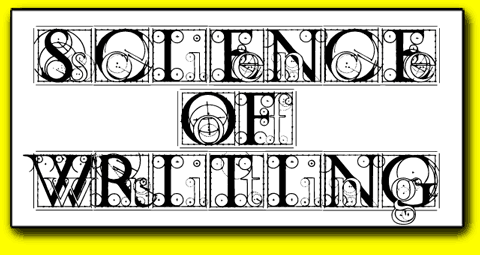Dialogue Can Support Character Gender
May-29-2012 Filed in: dialogue
At a recent writers conference, I heard an interesting lecture about dialogue, including 12 tips for developing great dialog.
One thing was missing: assuring that dialogue an author creates contains words that might likely be said by someone of the gender of the person who is speaking.
Using Gender Genie, it is easy to determine whether a man or a woman produced a particular written text, and I have reason to believe that Moshe Koppel’s algorithm employed by Gender Genie serves dialogue just as well.
When Koppel’s algorithm appeared in 2003, I immediately incorporated it into one of FictionFixer’s modules in order to determine the degree of maleness or femaleness of the bestsellers I had been data-mining. It has been part of the software ever since. The Science of Writing book series relies on FictionFixer (a corpus linguistics/computational stylistics program) to establish the techniques of bestselling authors revealed in current and forthcoming books in the series.
The algorithm performed flawlessly, with one exception: the first 12,000 words or so of Stephen King’s Carrie(1974).
In the early 2000s, it was difficult to obtain full texts of bestsellers without scanning and OCR’ing them, a thankless task I ended up doing repeatedly during the initial development of FictionFixer. At that time, the only work of Stephen King’s I had in digital format was the opening of Carrie, and Moshe Koppel’s algorithm was identifying the author as distinctly female.
If you’ve read Carrie, you will recall that the opening section concerns the famous female locker room scene and includes an inordinate amount of female dialogue.
I concluded this to be proof that the Koppel’s algorithm could identify female dialogue—believable female dialogue, that is—even when the author is male. Naturally, other hypotheses crossed my mind, some of which involved Stephen King’s wife Tabitha…
Later, I read the following in Stephen King’s On Writing, “The next night, when I came home from school, Tabby had the pages. She’d spied them while emptying my wastebasket, had shaken the cigarette ashes off the crumpled balls of paper, smoothed them out, and sat down to read them. She wanted me to go on with it, she said. She wanted to know the rest of the story. I told her I didn’t know…about writing high school girls. She said she’d help me with that part.”
A forthcoming book in the Science of Writing series includes much more about dialogue and gender, but in the meantime, you can paste your character’s dialogue into the Gender Genie site and determine whether the words might have been spoken by a character of that gender. When doing so, it is best to isolate all the dialogue of an individual character into a single file and paste it into the Gender Genie en masse. If you find you need to tweak a character’s manner of speaking to increase his or her gender authenticity, the site provides a link to a paper co-authored by Moshe Koppel that explains the surprisingly simple determining factors.
One thing was missing: assuring that dialogue an author creates contains words that might likely be said by someone of the gender of the person who is speaking.
Using Gender Genie, it is easy to determine whether a man or a woman produced a particular written text, and I have reason to believe that Moshe Koppel’s algorithm employed by Gender Genie serves dialogue just as well.
When Koppel’s algorithm appeared in 2003, I immediately incorporated it into one of FictionFixer’s modules in order to determine the degree of maleness or femaleness of the bestsellers I had been data-mining. It has been part of the software ever since. The Science of Writing book series relies on FictionFixer (a corpus linguistics/computational stylistics program) to establish the techniques of bestselling authors revealed in current and forthcoming books in the series.
The algorithm performed flawlessly, with one exception: the first 12,000 words or so of Stephen King’s Carrie(1974).
In the early 2000s, it was difficult to obtain full texts of bestsellers without scanning and OCR’ing them, a thankless task I ended up doing repeatedly during the initial development of FictionFixer. At that time, the only work of Stephen King’s I had in digital format was the opening of Carrie, and Moshe Koppel’s algorithm was identifying the author as distinctly female.
If you’ve read Carrie, you will recall that the opening section concerns the famous female locker room scene and includes an inordinate amount of female dialogue.
I concluded this to be proof that the Koppel’s algorithm could identify female dialogue—believable female dialogue, that is—even when the author is male. Naturally, other hypotheses crossed my mind, some of which involved Stephen King’s wife Tabitha…
Later, I read the following in Stephen King’s On Writing, “The next night, when I came home from school, Tabby had the pages. She’d spied them while emptying my wastebasket, had shaken the cigarette ashes off the crumpled balls of paper, smoothed them out, and sat down to read them. She wanted me to go on with it, she said. She wanted to know the rest of the story. I told her I didn’t know…about writing high school girls. She said she’d help me with that part.”
A forthcoming book in the Science of Writing series includes much more about dialogue and gender, but in the meantime, you can paste your character’s dialogue into the Gender Genie site and determine whether the words might have been spoken by a character of that gender. When doing so, it is best to isolate all the dialogue of an individual character into a single file and paste it into the Gender Genie en masse. If you find you need to tweak a character’s manner of speaking to increase his or her gender authenticity, the site provides a link to a paper co-authored by Moshe Koppel that explains the surprisingly simple determining factors.


1s.jpg)
2s.jpg)